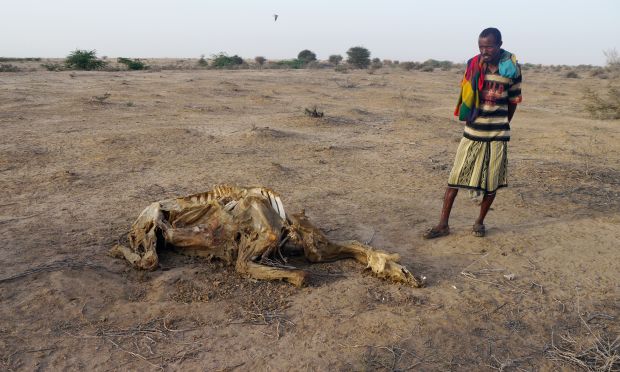“We are living here in Shahda camp because we have lost almost everything. Before we came, we were feeding cardboard and water to our animals” – Star Abdullahi, a mother of 6 and one of the millions of people in Somalia who have fled violence, drought and hunger.
In 2011, just six short years ago, over 260,000 people starved to death in Somalia. This year, famine once again threatens thousands of families across the country.
Somalia has been wracked by civil war and conflict for over 25 years. Militant groups such as Al-Shabaab – which the US designated as a foreign terrorist organization in 2008 – have controlled vast areas in the south of the country for the last decade, causing many internally displaced people (IDPs) to flee to northern areas such as Puntland. The resulting instability has caused a severe deterioration in living conditions for most of the population, which has been exacerbated by recent events such as floods and droughts.
Doctors of the World has operated a sexual and reproductive health (SRH) clinic in the port town of Bosaso in Puntland since 2011. Currently, more than 60,000 people live in 38 IDP camps spread throughout Bosaso. An additional 3,000 displaced people are scattered in rural areas outside of town.
Puntland and Somaliland are currently experiencing drought conditions, exacerbated by a milder than normal rainy season from October to December (known locally as the Deyr). Outside of the rainy season, Somalia receives little rainfall; as a result, drought conditions will likely intensify, and total crop failure is expected in some areas. In Puntland, drought conditions are estimated to impact over 150,000 people. Thousands of people living in rural areas are flooding into cities and IDP camps in order to find food and aid.
“We had to leave our wives and children behind in villages because they are not strong enough to make this journey on foot,” explained Abdirisak Farah.
As a result of the drought conditions there has been a sharp increase in cases of malnutrition, AWD (Acute Watery Diarrhea – a precursor to cholera and a direct cause of malnutrition) and cholera itself. It is estimated that 363,000 children under 5 are acutely malnourished – with 71,000 at risk of imminent death. In 2017 so far there have been over 7,700 cases of AWD and 183 deaths.
In response to the crisis, our teams are doubling their capacity in Somalia. We are increasing activities such as early detection, prevention and treatment of these illnesses through our mobile units – with two new units added last month. Beatriz Valbuena, DotW General Coordinator in Somalia, explains, “We already had the expertise, but with the new mobile units we can help a lot more people.”
We are also focused on providing care in rural areas, which have little to no access to health and medical facilities. According to Valbuena, “The last remaining organization in this region had to call back its two mobile teams due to budgetary reasons; as a result, there were only 3 mobile teams left in the whole Bosaso region. The women, children and men in these areas have no way to get to places where they can be treated.” She goes on to say, “We are transporting the severely undernourished people by ambulance to our health centers, all free of charge.”

